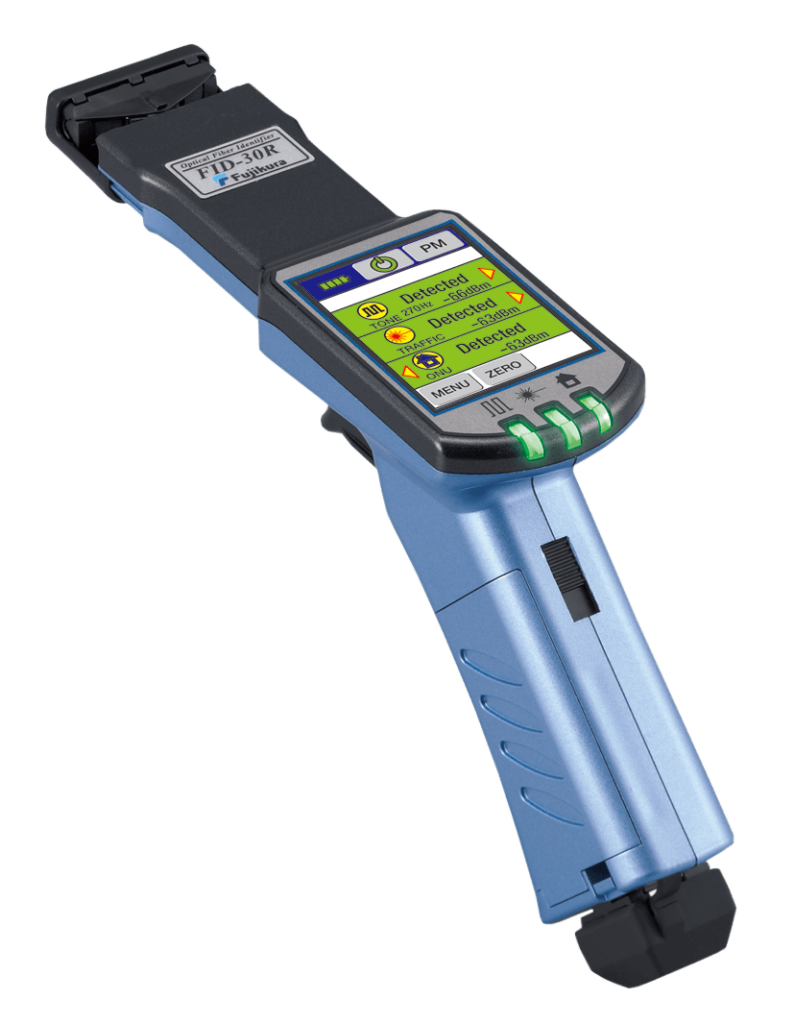Optimize Your Fibre Optic Efficiency: Recognizing Optical Fibre Diameter Analyser Technology
The performance of fiber optic systems is seriously affected by the accuracy of their size, a variable often forgot in the quest of ideal signal stability. Comprehending the modern technology behind optical fibre diameter analysers exposes the complex balance between measurement accuracy and production high quality. These gadgets not only enhance compliance with sector requirements yet additionally give real-time insights that can preemptively deal with potential issues. The implications of their usage expand past simple dimension; they can basically change the landscape of fiber optic efficiency. What aspects should one consider to harness their full possibility?
Significance of Optical Fibre Size
The size of optical fiber plays a critical role in figuring out the performance and effectiveness of interaction systems. It affects a number of key criteria, consisting of the setting of light propagation, attenuation, and bandwidth capacity. Bigger diameters normally permit several light modes, promoting greater information transmission rates. Conversely, smaller sized sizes often tend to sustain less modes, which can boost signal quality and lower crosstalk.
Moreover, understanding the diameter's implications can lead to set you back financial savings by lowering the demand for signal boosting and repeaters in considerable networks (optical fibre diameter analyser). To conclude, the importance of optical fibre diameter can not be overemphasized, as it directly impacts the total performance and reliability of modern-day communication systems

How Size Influences Signal Quality
Signal quality in optical fibre systems hinges dramatically on the size of the fibre. The diameter affects a number of crucial parameters, consisting of attenuation, data transfer, and modal diffusion. A smaller sized diameter can lead to higher attenuation rates, resulting in signal loss as light trips with the fibre. This depletion can jeopardize the stability of the transmitted information, resulting in a decrease in signal quality, especially over long ranges.
Alternatively, larger sizes typically permit enhanced light capture and reduced modal dispersion, enhancing signal quality. In multimode fibres, a bigger core size can support several light modes, but it might also introduce intermodal diffusion, which can weaken signal high quality. Picking the ideal fiber diameter is crucial for accomplishing the preferred performance in details applications.
In addition, the interaction between the fibre diameter and the wavelength of the light used plays a vital duty in identifying the reliable transmission distance and overall signal honesty. Comprehending how fibre diameter affects signal quality is important for network developers and engineers striving to optimize optical fibre systems for reliable, high-speed information transmission.
Overview of Diameter Analyser Technology
In several optical fibre manufacturing procedures, precise measurement of fiber diameter is important for guaranteeing constant performance and top quality (optical fibre diameter analyser). Size analysers are innovative instruments developed to examine the physical measurements of optical fibres with high precision. They employ innovative optical and laser technologies to measure the diameter, ovality, and concentricity of the fibre, therefore offering important data for top quality control
These analysers can operate in-line throughout the manufacturing process or as part of off-line testing procedures. In-line systems allow real-time tracking, permitting makers to readjust specifications promptly, thus keeping optimal production conditions. Off-line analysers, on the other hand, provide detailed examinations of batches, making sure that any kind of variances from specified tolerances are identified and resolved.
Diameter analysers dramatically contribute to the decrease of defects in optical fibres, enhancing total product dependability. By regularly gauging essential parameters, these innovations help with conformity with sector criteria and requirements. As the need for high-performance optical fibres remains to climb, the role of diameter analysers comes to be significantly essential in achieving the wanted quality and performance standards in fibre optic systems.
Trick Features of Fibre Diameter Analysers
Although various models of fiber size analysers exist, they frequently share several key attributes that enhance their capability and integrity. One of one of the most considerable attributes is high-resolution dimension abilities, which ensure exact diameter analyses, essential for maintaining quality assurance in fibre production. Additionally, lots of analysers integrate advanced optical sensing units designed to spot minute variations in fibre diameter, hence providing important information for process optimization.
One more vital attribute is real-time surveillance, permitting drivers to obtain immediate responses on fiber size throughout the manufacturing navigate to this site procedure (optical fibre diameter analyser). This ability facilitates rapid changes and minimizes the probability of problems. Several analysers additionally come equipped with user-friendly interfaces, making it possible for operators to easily navigate through setups and data results
Additionally, robust data storage space and analysis performances are essential for tracking historic performance fads and webpage ensuring conformity with industry requirements. Some models even use connection options for assimilation into existing manufacturing control systems, boosting general functional efficiency. Compact and portable designs permit for flexible implementation within production settings, making certain that high quality guarantee processes are smooth and efficient. These functions jointly add to the efficacy of fibre diameter analysers in maximizing fibre optic performance.
Best Practices for Fibre Optimization

First, regular calibration of optical fiber diameter analysers is important. This ensures precise dimensions and minimizes potential disparities that could impact performance. Next off, keeping a tidy workplace is essential; dust and contaminants can lead to signal degradation.
Furthermore, it is necessary to pick fibres that fulfill certain application requirements. This involves assessing aspects such as depletion, transmission capacity, and environmental conditions. Correct installation techniques should additionally be complied with, including staying clear of sharp bends and too much stress, which can compromise fibre integrity.
In addition, using advanced surveillance systems can help with real-time performance assessments, making it possible for prompt identification of concerns. Normal screening and upkeep need to be conducted to make certain that fibers remain within optimal operational criteria.
Lastly, training personnel on the most recent fiber optimization innovations and methods will improve their capability to apply efficient approaches. By complying with these finest techniques, companies can substantially enhance the performance and life expectancy of their optical fibre systems, ensuring reliable interaction and blog information transfer.
Conclusion
Finally, the combination of optical fibre diameter analyser modern technology is important for optimizing fiber optic performance. By making certain accurate dimensions of fibre measurements, these analysers dramatically boost signal top quality and lower losses during data transmission. Routine calibration and upkeep of the analysers are imperative to support optimal efficiency and conformity with industry standards. Eventually, the application of this technology assists in enhanced data transmission prices and reinforces signal honesty, adding to the total performance of fibre optic systems.
Signal quality in optical fibre systems pivots considerably on the size of the fiber.In several optical fibre production procedures, accurate measurement of fibre size is necessary for making sure consistent performance and high quality. As the demand for high-performance optical fibres continues to climb, the role of size analysers ends up being increasingly crucial in attaining the wanted high quality and performance standards in fibre optic systems.
These functions collectively contribute to the efficiency of fiber diameter analysers in maximizing fibre optic performance.
In conclusion, the assimilation of optical fibre diameter analyser innovation is vital for making the most of fibre optic efficiency.
Comments on “The Importance of an Optical Fibre Diameter Analyser in Research and Development”